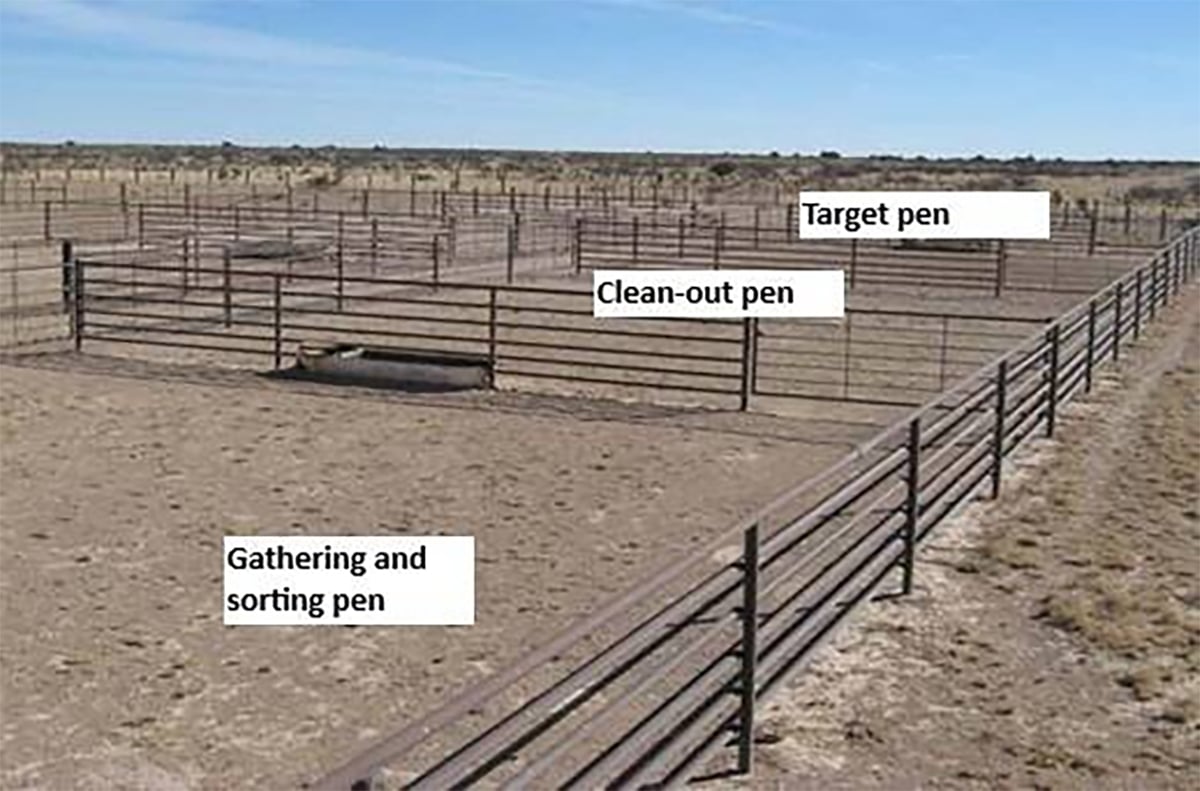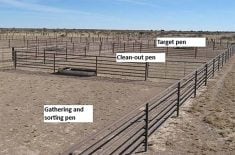COUNTY OF WARNER, Alta. – When two farmers get together in southern Alberta, they sadly shake their heads as they talk about burned-out crops suffering under the worst drought any can remember.
Farmers and ranchers are getting desperate as skies remain clear and bone dry winds suck the last moisture out of burning cereals and dead-looking pastures.
“It headed, but when you look at the green stuff and take it out, there is no juice in it,” said Brian Lindeman as he described his barley and wheat. On his dryland farm south of Milk River, the last moisture came from a good snow in April that got the crops started.
Read Also

Teamwork and well-designed handling systems part of safely working cattle
When moving cattle, the safety of handlers, their team and their animals all boils down to three things: the cattle, the handling system and the behaviour of the team.
Lindeman’s hay crop was about one third of normal and crops sown in stubble are a failure.
“The cows are out grazing the crops already and some guys never stopped feeding from last fall,” he said.
Most farms have had less than 2.5 centimetres of rain since April 1. Temperatures have soared past 30 C for the latter half of July and the hot, dry westerly winds are blowing more than 50 km-h.
The last serious drought in 1988 delivered about 7.5 cm of moisture, said Erling Olsen of Warner.
“The drought seems to be from border to border,” he said.
He has already written off 200 acres of thin, starved-looking canola. He dug down into the bare patches and discovered seeds never germinated.
To make matters worse, he planted 80 acres of hemp under contract to the now bankrupt Consolidated Growers and Processors based in Manitoba.
“Those are the hassles of farming,” he said. He did not buy crop insurance and does not expect much help from the provincial Farm Income Disaster Program.
Nevertheless, crop insurance claims are streaming into Alberta Financial Assistance offices across the south.
Adjusters have looked at fields where yields range from two to 20 bushels per acre, said regional manager Tom Schneider.
“It’s too early to get a handle on the extent of the damage,” he said.
Many farmers asked for permission to bale failed crops as greenfeed or turn cattle into the fields for grazing.
The greatest level of damage is south of Highway 3 west from Pincher Creek, Cardston and some areas north to Claresholm.
Pasture or hay insurance was not offered this year.
Ray Bassett, assistant deputy minister with Alberta Agriculture, said the province is examining options for the area and is waiting to see evaluations from crop insurance officials before reaching a decision on aid.
The County of Warner sent letters inviting premier Ralph Klein and agriculture minister Ty Lund to survey the drought disaster.
“Tempers are getting short and farmers and ranchers are getting very irate. This is their livelihood,” said county deputy reeve Bob Jones.
They need money right away.
“There won’t be a whole lot of harvest but they have to go through the motions,” said Jones. He leases out his farm and worries he may not receive any rent this season.
“Crops are past the point where rain can help,” he said.
Threat of fire
Added to the concern are thousands of acres of tinder dry grass along the Milk River ridge.
On July 23 a prairie fire razed crown lease land south of Milk River in a strip 10 km long and 23 km wide. A week later, fire crews continued to water down hot spots throughout the area.
A second fire started July 29 when a power pole fell and ignited about 20 acres of grassland.
About 10 percent of the county is under irrigation from the St. Mary’s Irrigation District. The water supply is threatened with cutoff if the situation persists.
Stan Klassen, of the Alberta Irrigation Projects Association, said
irrigation districts are hoping to hold on and not shut down water delivery to farms.
“Water supply is really low. We’re hoping to limp along because right now the cereals are turning and they won’t need as much water.”
The situation for irrigation water supplies could be worse next year if snow pack in the eastern slopes is low again. Reservoirs rely on good runoff from mountain snows to refill each year.















